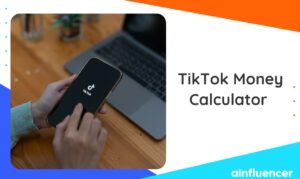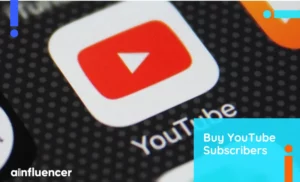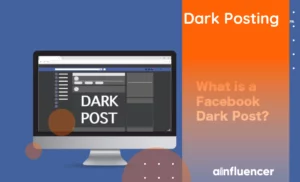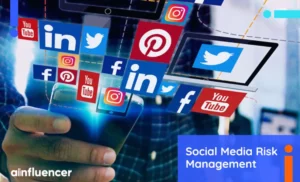Lead generation is the backbone of every marketing campaign, and even though the specific strategies will largely depend on your niche, some tips apply to most industries. Especially if we consider that sales, marketing, and lead acquisition heavily rely on automation today. The right tools can be of great help, but, of course, they cannot replace the creative touch — an essential skill for the role of sales manager. So, let’s take a look at the best strategies that can help you take lead acquisition to a new level and see if there are any software helpers that can aid you with that.
Making Your Website Outperform the Competition
Website is one of the primary means of generating leads, and there are plenty of innovative ways to make your corporate site work to its full capacity. The best strategies to streamline B2B lead generation are:
1. Analyze factual user behavior
Besides Google Analytics, which gives a general overview of website visitor behavior, several tools are designed specifically for B2B sales and lead generation. Leadfeeder, for example, can categorize website visitors based on their specific behavior and assign scores on which leads to engage first. It can also provide more detailed info about everyone who visits your website, including company name and business email. Woopra, Pardot by Salesforce, and Clearbit also have similar functionality.
2. Create negative keyword lists
Knowing what to target is very important, just like knowing what not to target. If you run Google PPC campaigns (which you should because this strategy is one of the most effortless and generally affordable ways of lead generation), creating lists of negative keywords can help you optimize ad relevance and budget.
Still, do not get too carried away with negative keyword phrases — you do not want to eliminate too many search results. The best strategy is to remove only confusing or irrelevant searches. For example, if you sell wine glasses, removing the ad display on optical glasses makes sense. Or, if you distribute gloves, you may exclude boxing or medical gloves.
3. Keep A/B testing and optimizing
Marketing and lead generation are about trial and effort. A polished, easy-to-navigate website with proper CTAs and attention grabbers is one of the surest ways to impress new business leads. There are plenty of plugins and landing page builders that can help you analyze and improve website performance based on your visitor behavior. Google Optimize, Optimizely, and Convert Experiences are some of the top choices to start with.
Using the Power of Social Media to its Fullest
Whenever one thinks of generating B2B leads over social media, LinkedIn is the first platform that comes to mind. Even though it’s true that LinkedIn remains a powerful source of business lead generation, sales managers should also invest effort into other platforms that apply to their business niche. Twitter and Threads are some of the most obvious examples, but other professionally-focused platforms, like GitHub or Behance, may suit your business specifics. Platforms aside, here are some tips to help you revolutionize B2B lead generation with social media.
1. Tailor content for each network
The days of re-marketing content are gone, especially considering that the digitally native generation of users acquires more power over consumer and business decisions. Their target use of social media — each site for a particular purpose — requires a multi-channel marketing approach. Experiment with different content forms and emphasize quality over quantity. Managing two or three networks effectively is better than casting a wide net. Most importantly, your content should be unique — no repetitive posts across different channels.
2. Regularly update your CRM with social leads
When you create channel-specific content that spurs your target audience’s interest, people will start engaging with your posts. Do not forget to update your CRM with all the new leads you engage on social media. You can do it manually by checking the profile of every new user who commented, shared, or reacted to your post.
Or, better, you could use automation. For example, this Chrome/Firefox extension is backed up by a database of 450+ million verified contacts, searchable by industry, company, and other B2B-related parameters. The plugin saves time by pulling information from a user profile and integrating it with your CRM. You can also search the website version of the database — it supports bulk searches and can become a primary tool for creating carefully segmented email lists for further marketing.
3. Encourage reviews and referrals
The power of social proof never loses its relevance — no one knows it better than businesspeople. Encourage your clients to leave reviews — not only on social media but also on your website whenever possible. Create forms, send follow-ups, or run polls about your service/product quality. It’s okay to ask, especially considering that most of your B2B customers do the same with their clients. This means your feedback requests will probably fall on receptive ears.
4. Consider influencer marketing
Influencer marketing is no longer B2C-exclusive. However, only a quarter of businesses leverage the power of B2B influencer marketing. So, the niche is not overcrowded yet! Consider claiming a spot before it gets too noisy there. Partnering up with the right influencers is possible in practically any business segment, offering a unique opportunity to expand business reach, engage new leads, and score more social proof points.
Acquiring Leads with Email Marketing
Email marketing is another effective and massively used means of B2B lead generation. But since literally everyone does it, you might need to get a little more creative to stand out from the crowd. The following tips should help.
1. Focus on account-based marketing
Account-based marketing (ABM) is the surest way to acquire new business leads. It has much to do with proper segmentation because different employees in a single company will be interested in different offers and promotional materials. A rough subdivision of employee roles in each company includes:
- Initiators: people responsible for acquisitions and generally interested in how innovative or functional the new products are;
- Users: people who will directly work with your product and who are interested in more detailed guides and tutorials on how to use it;
- Decision-makers: these people usually allocate budgets, so they are primarily interested in how reasonable investing money in your promoted products or services is.
Segmenting these groups and tailoring email content to their interests can significantly increase the success of your email marketing campaigns. And the same approach works great with cold emails, too!
2. Use suitable automation software
The success of email marketing often relies on automation. There are plenty of CRMs and email marketing software that combine automation and analytics, i.e., Mailchimp, HubSpot, ActiveCampaign, Drip, etc. The trick is to choose a tool (or a set of tools) that serves your company size and business specifics. Most of these services come with similar features but also have a specific focus of their own. Mailchimp is mostly about email automation; Drip excels at sending follow-ups; ActiveCampaign has strong analytics, whereas HubSpot comes with additional social and content management features. So, the choice is totally up to you.
The last tip is to always monitor, analyze, and improve the results of your lead acquisitions campaigns — across all channels. It’s all about trial and effort, remember?
Conclusion
Revolutionizing lead generation through smart B2B sales strategies involves leveraging technology and creativity to outpace the competition. Key practices include making your website a lead-generating powerhouse, utilizing advanced analytics for targeted marketing, and embracing the full potential of social media platforms. Additionally, nurturing client relationships through CRM updates, encouraging feedback, and exploring influencer marketing is pivotal. The strategic use of email marketing, especially through account-based marketing and automation tools, further enhances lead acquisition. Continuously analyzing and optimizing these strategies ensures sustained growth and competitive advantage in the dynamic B2B marketplace.








